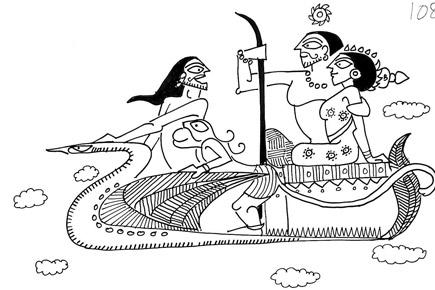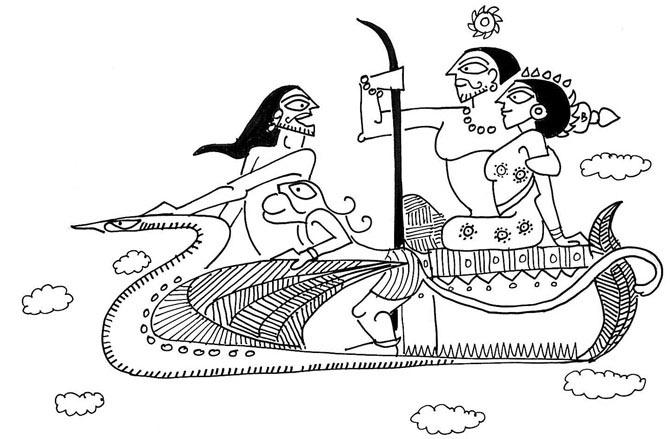One morning, I got an excited WhatsApp message, one of the many that try to prove Hinduism is scientific, a popular trend seen in religions around the world ever since the scientist began to be taken more seriously than the priest


ADVERTISEMENT
 One morning, I got an excited WhatsApp message, one of the many that try to prove Hinduism is scientific, a popular trend seen in religions around the world ever since the scientist began to be taken more seriously than the priest. This message had an image of a Google map that showed that the distance from Sri Lanka to Ayodhya could be covered by foot in 21 days, the same number of days between Vijayadashami (which marks the killing of Ravana) and Diwali (which marks the return of Ram to Ayodhya). This got many people excited.
One morning, I got an excited WhatsApp message, one of the many that try to prove Hinduism is scientific, a popular trend seen in religions around the world ever since the scientist began to be taken more seriously than the priest. This message had an image of a Google map that showed that the distance from Sri Lanka to Ayodhya could be covered by foot in 21 days, the same number of days between Vijayadashami (which marks the killing of Ravana) and Diwali (which marks the return of Ram to Ayodhya). This got many people excited.
When Google Maps says 21 days of walking, it means 21 days of continuous walking, without resting or sleeping, a little detail no one clarified. But, more importantly, did Ram not travel by Pushpak Viman, the famous flying chariot of Ravana, according to Valmiki Ramayana? Was the plane so slow? Twenty-one days? When I tweeted this question, both for fun and as a social experiment, I was amazed at the range of passionate responses.
On one extreme were people who mocked the idea of the ancient Pushpak Viman, sarcastically speaking of fewer fuelling stations and absence of Google Maps. They included the immature ones who saw mythology as fantasy, and the mature ones who understood it is subjective truth transmitted through metaphors.
On the other extreme were those who simply pointed out, with absolute certainty, that after killing Ravana, Ram had many chores to do (coronation of Vibhishana, for example) and so must have left a few days after Vijayadashami. For them, the Pushpak Viman was a lost ancient Indian reality, like Atlantis, Eden and Avalon are for many in the West, all evidence to the contrary notwithstanding. I suspect many of these people are engineers who need to reconcile science with matters of faith, and they cannot handle the gap between physical and psychological realities. So deep is the yearning to make mythology into history that they accept even fantasy fiction, which aligns with their faith, as absolute historical truth.
Then came the trolls. With their foul language. They transformed a casual fun tweet into an attack on Hinduism, Modi and nation. Their outrage enabled them to feel important as they transformed themselves into 'saviours'. Most of these trolls emerged at night, which means many of them live in the USA, and aspire to eventually give up their Indian citizenship and become Americans. They demanded I write the same way on Christianity and Islam, which clearly means they have never read anything I have written, and believed, without question, the lies of their cult leader, a Bharat Mata Tyagi, an infamous plagiarist and patriot-pretender. Cutest, were the direct messages that clarified that they really liked my work but wished I did not use the word mythology. Surely Ram was real.
Philosophers have struggled to explain what is real. For Buddhist philosophers even Buddha was not real, just a collection of moments, frames of temporary experiences created by our senses. For scientists, it is that which is measurable. For a troll, it is their cult leader's fantasy. For many, it is the word of the guru. History itself becomes mythology, or rather propaganda, when we transform historical figures into uni-dimensional great souls, and ignore data that reveals that in the past, the great soul was once a racist, and even casteist.
The author writes and lectures on the relevance of mythology in modern times. Reach him at devdutt@devdutt.com
 Subscribe today by clicking the link and stay updated with the latest news!" Click here!
Subscribe today by clicking the link and stay updated with the latest news!" Click here!






